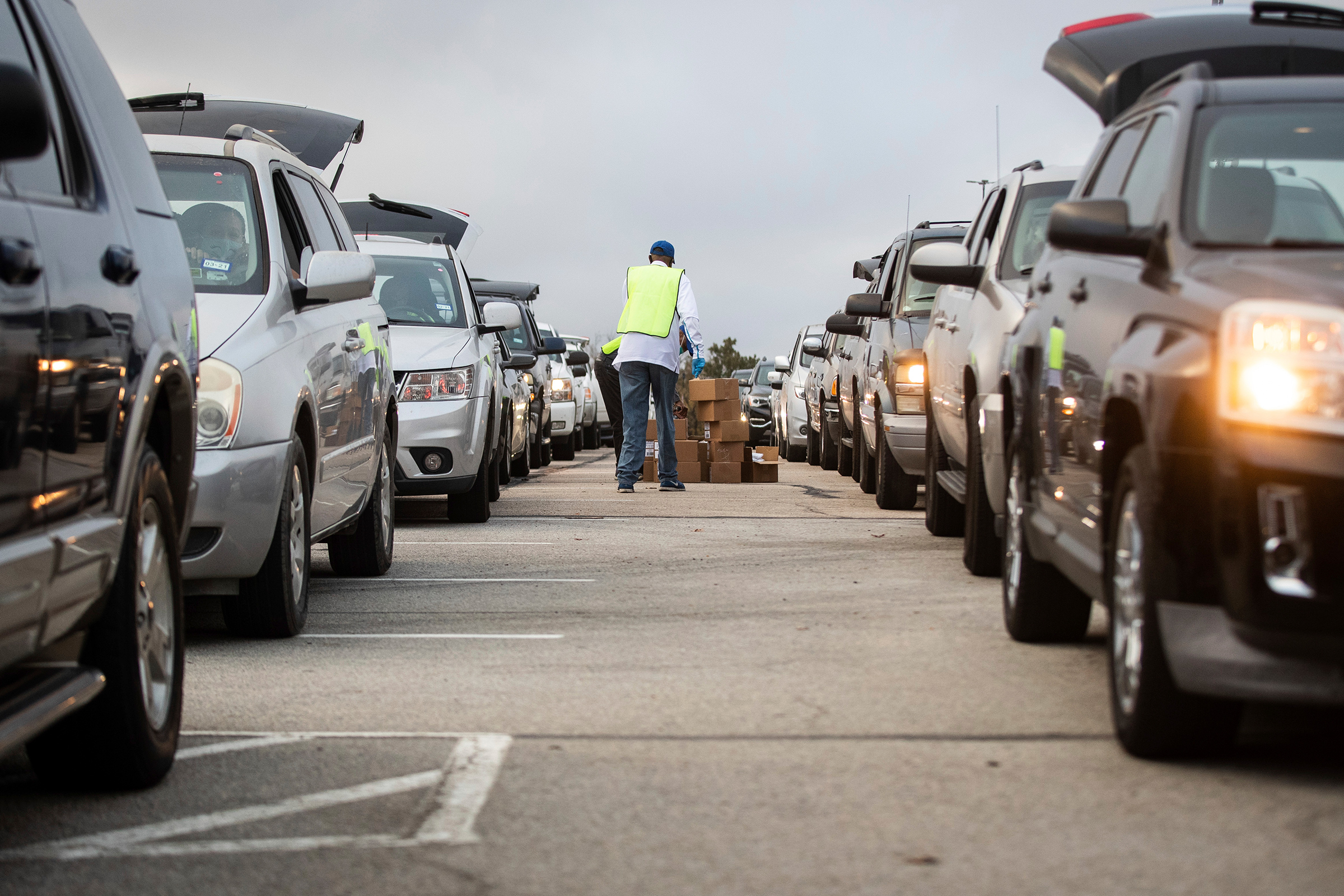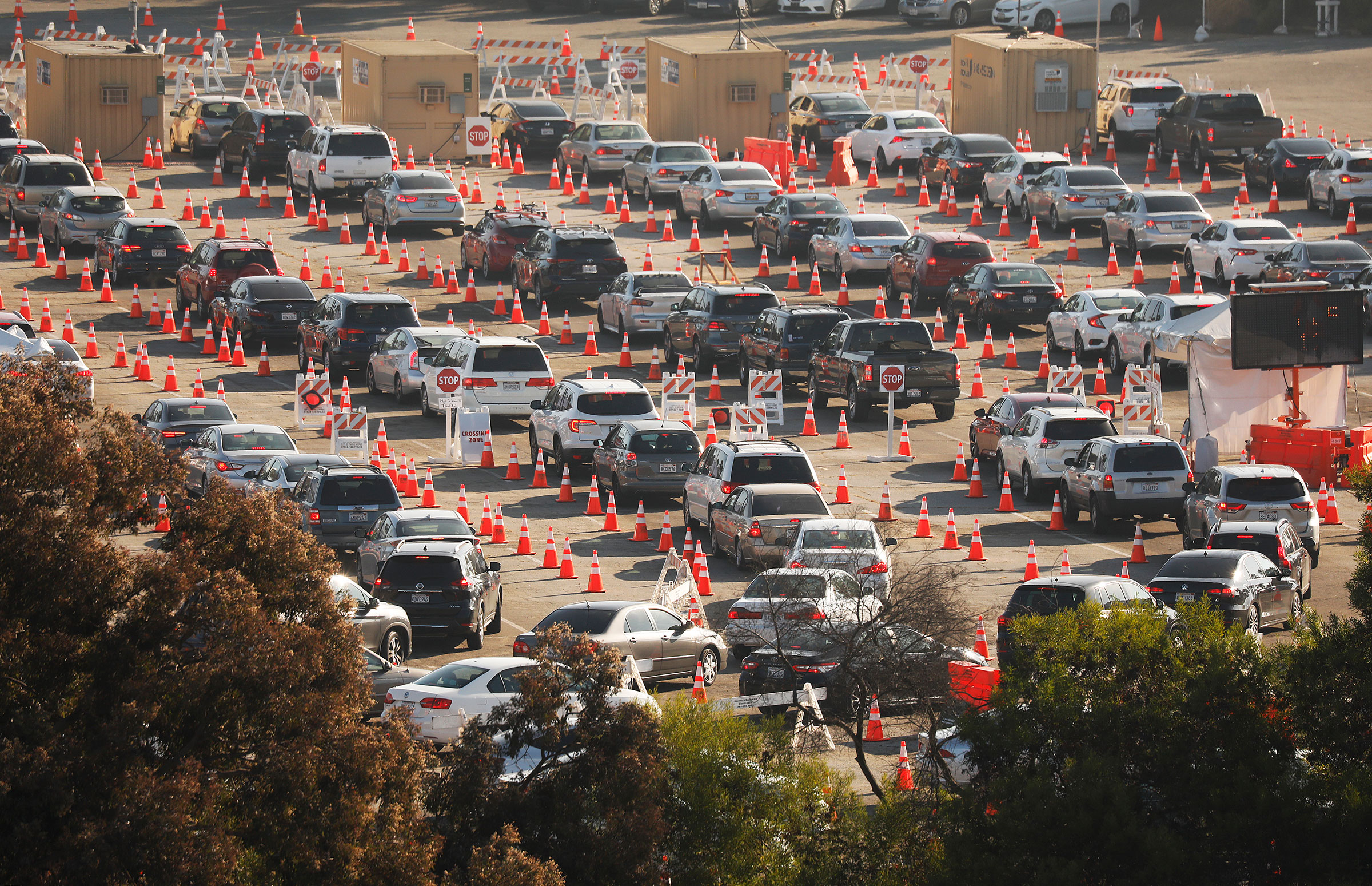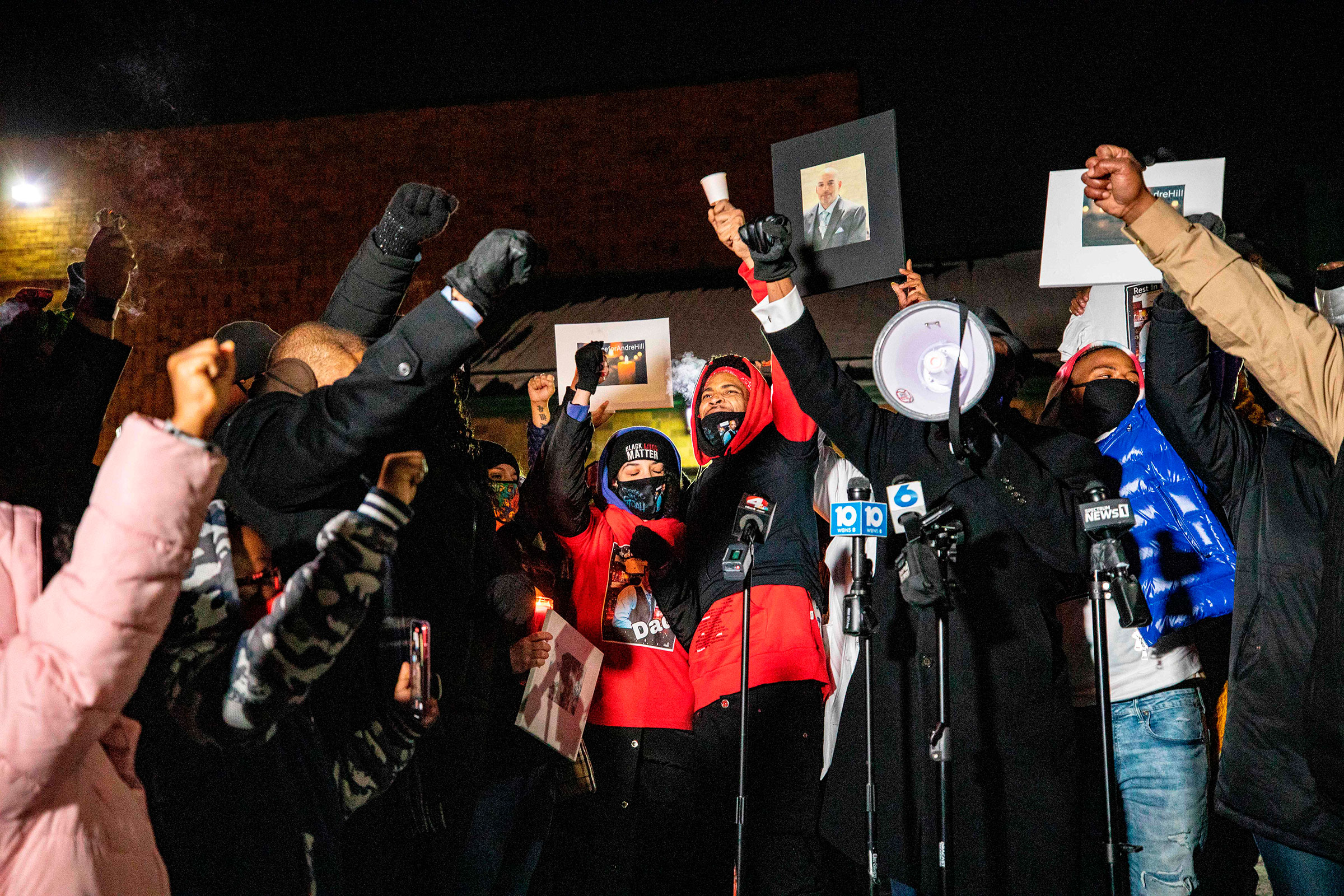When Franklin Delano Roosevelt was sworn in as President on March 4, 1933, a quarter of Americans were unemployed and multitudes were living in shanty-towns. By the end of his first 100 days in office, he had pushed 15 bills through Congress, revamped the financial and agricultural systems, expanded unemployment relief and laid the foundation for economic recovery.
Nine decades later, another Democrat, Joseph R. Biden Jr., ascends to the White House at a time of extraordinary crisis. A once-in-a-century pandemic has killed more than 400,000 Americans and erased nearly 10 million jobs. The new President has to contend with climate change, a national reckoning on racial justice and a bitterly divided electorate.
As he plots his first months in office, President Biden has been studying Roosevelt’s model. “We are coming to this with a determination to meet these challenges with solutions as big as the problems are,” White House chief of staff Ron Klain tells TIME. “Our goal is to rally the country behind that, mobilize the Congress behind that, start to make the changes we need to make to tackle these horrible problems.”
That mission was reflected in Biden’s opening flurry of executive actions. Within hours of his Inauguration, Biden rejoined the Paris Agreement and the World Health Organization and rescinded the Trump Administration’s so-called Muslim ban, which restricted immigration from a host of Muslim-majority countries. The moves were intended to telegraph that his presidency would eschew the isolationist tendencies of his predecessor.
Biden’s first three months in office will be about far more than just signaling a shift in tone. Interviews and briefings with more than a dozen aides and outside advisers to the Administration make clear that the new President will be focused on two primary objectives: curbing the spread of COVID-19 and delivering economic assistance to families in need. By April 30, Biden’s 100th day in office, the Administration hopes to have vaccinated 100 million Americans, authorized the Defense Production Act to increase the vaccine supply, and safely reopened the majority of elementary and middle schools.

Biden’s aides and policy wonks—most working remotely, gathering over Google Meet—have been scrambling to line up a battery of policies, regulatory changes and legislative language to roll out within the first week. Programs that Biden can run out of the West Wing, like overseeing orderly vaccine distribution and encouraging Americans to get vaccinated, will require a level of discipline and organization that the White House has not seen in four years.
There are also challenges outside its control. The Biden Administration will be dependent on a fractious Congress to authorize funding for both its vaccine distribution and economic stimulus plans. Biden has urged lawmakers to act quickly to pass a version of the $1.9 trillion relief package he proposed on Jan. 14. But it is not yet clear how much Republican support he can muster. And even with narrow Democratic control of both chambers, the pace of the negotiations may be slowed by the Senate’s impeachment trial of former President Donald Trump.
The Administration hopes to leverage broad support for economic stimulus to push a progressive agenda, including raising the national minimum wage to $15 and more funding for community health clinics—-policies it says will usher in a long-term recovery. “It is the domestic equivalent of the domino theory,” says former White House chief of staff Rahm Emanuel, who served in the role when President Barack Obama took office amid the Great Recession in January 2009.
“If you get COVID under control, you’re gonna get an economy that flips a switch.”
The goal, Klain says, is to manage the multiple crises facing the U.S. in such a way that the nation emerges from a troubled period stronger and more unified. Here’s a cheat sheet on what to expect from the Biden Administration over its first 100 days.
Curbing the Pandemic
The COVID-19 vaccine is rolling out more slowly than expected, infection rates are worsening, and some experts predict that as many as 700,000 Americans could die from the disease before it is contained. Biden intends to change that by speeding vaccine distribution and reducing new infections in the meantime. “You can’t do it with half measures,” says Klain. “You need to throw everything you have at it.” The vaccine rollout plan hinges on a $20 billion federal program that would provide direct assistance to local officials. Whereas the Trump Administration saw its role as getting vaccines to the states, then allowing them to figure out how to dispense doses, Biden’s team will be involved in distributing vaccine supplies to priority populations. “We want to see the federal government coordinating more doses between states and even within states between nursing homes and the general public, so that we’re not allowing inventory to sit unused in areas where there’s lower demand,” says Dr. Howard Forman, a professor of public health and management at Yale University who has advised Biden’s campaign.
To run this federal program, the new Administration has tapped a team of public-health experts, including a former commissioner of Chicago’s health department, Dr. Bechara Choucair, who will be the White House vaccinations coordinator, and Dr. David Kessler, a former head of the Food and Drug Administration. Kessler will work with the Department of Health and Human Services to increase vaccine supplies, while Choucair will run the response from the West Wing. The Administration plans to use the Defense Production Act to ramp up production of vaccine supplies and protective equipment. The Biden Administration will also push to make it easier for working Americans to receive the vaccine.
The proposed relief bill would fund sick days for low-income workers who may need to take time off to get vaccinated or to recover from any side effects.

In the months before vaccinations become ubiquitous, President Biden will launch a campaign to depoliticize mask wearing. He plans to call on business and religious leaders—including pastors, rabbis and imams—to normalize face coverings. Biden will also appeal directly to Americans to take a 100-day mask “challenge,” in which they agree to cover their noses and mouths in public for at least the first three months of his presidency.
Administration officials put some of the blame on their predecessors for the magnitude of the challenges they’ve inherited. “The Trump Administration has never had a federal comprehensive strategy. They’ve never put the infrastructure in place to ensure vaccinations make it into the arms of the U.S. population,” says Jeffrey Zients, who is coordinating the Biden Administration’s response to the pandemic. And health experts say convincing skeptics to don masks almost a year into the pandemic will be no small feat, especially after Trump made them a cultural fault line. “There has been nearly a year of disinformation around the pandemic, and to repair that is going to be an extraordinary task,” says Dr. Leana Wen, a former health commissioner of Baltimore and current visiting professor at the George Washington University School of Public Health. Biden’s “major problem is going to be winning hearts and minds of half the country that not only did not vote for him but may actively distrust what he has to say.”
Reviving the Economy
Most economists believe that as soon as the threat of COVID-19 abates through mass vaccinations and herd immunity, the economy will begin to rebound on its own. But the timeline is tough: even if Biden’s plans to speed up vaccine distribution are successful, the country is not expected to achieve this milestone until summer or fall. The economic stimulus proposal Biden released Jan. 14 is largely focused on easing the pain until then.
The proposal would extend weekly enhanced unemployment insurance through September, increasing the allotted amount from $300 to $400, and send $1,400 in direct payments to most Americans. The plan would also funnel $130 billion to schools to help them reopen safely as well as $15 billion in grants to small businesses to help supplement lost revenue. (Biden says he will propose a second round of legislation in February focusing on job creation.)
To pass such legislation in an evenly divided Senate, Biden will need not only unified Democratic support but also the votes of at least 10 Republicans, several of whom have already expressed sticker shock. Democrats could dodge the 60-vote requirement by employing an arcane budget procedure known as reconciliation, but doing so would likely restrict the scope of the package and could undermine Biden’s message of bipartisan cooperation.

Klain, the incoming chief of staff, is cognizant of these challenges. Republican Senators who have been briefed about Biden’s plans, he says, are skeptical. “Many of them have said they think the price tag is big,”
he says. “Our response is the challenges are big.”
Delaware Senator Chris Coons, a Biden protégé and close adviser who helped broker last December’s $900 billion bipartisan relief deal, says he is cautiously optimistic, particularly in the wake of the Jan. 6 insurrection at the Capitol. “Leaders of both parties are looking hard at just how divided we are and recognizing we need to show the American people that Congress can work and can get things done,” he says.
Not all of Biden’s economic agenda hinges on Congress. He has asked the requisite agencies to extend the federal moratorium on evictions and foreclosures through March 31, and the pause on federal student loan payments through Sept. 30. But there’s ultimately a limit to what the Executive Branch can do on its own. “There’s no set of buttons and levers the President can push and pull to generate the optimum mix of economic growth, unemployment and inflation,” says Kenneth Mayer, a University of Wisconsin–Madison professor who studies Executive Orders.
Climate and Racism
The dual crises of racial justice and climate change also loom large in the President’s mind, advisers say. On Jan. 20, he became the first President in history to explicitly condemn white supremacy in an Inauguration speech. The Administration’s proposed stimulus plan also addresses several items raised by the Black Lives Matter movement. That includes assistance for communities of color hit disproportionately hard by the pandemic, funding to expand community health centers and prioritizing relief for minority-owned small businesses.
Biden has tasked Susan Rice, the head of the Domestic Policy Council, with overseeing the Administration’s racial-equity initiatives, which will assess how the government can maximize resources for minority communities and ensure diversity within its own ranks. And Biden is launching initiatives to expand access to health care for women of color and reform the criminal justice system.
Another raft of early moves will reposition the U.S. response to a warming planet. In addition to rejoining the Paris Agreement, Biden rescinded the Keystone Pipeline permit and ordered federal agencies to reinstate environmental regulations his predecessor had rolled back, like rules on methane emissions in oil and gas production. And Biden has previously said he would use the federal government’s purchasing power to drive demand for green products, a move experts expect him to do early on by mandating federal agencies to buy low-emission vehicles and other eco-friendly goods.

The Administration also plans to reverse a slew of Trump-era policies on immigration. Already, Biden has put forward a bill that would create a path to citizenship for millions of undocumented immigrants and boost development aid to Central American countries. He plans to create a task force to try to reunite more than 600 children separated from their parents after crossing the U.S.-Mexico border under Trump’s “zero tolerance” policy. Biden is also expected to reverse Trump’s policy that tried to exclude undocumented immigrants from the Census.
While Biden’s top aides and advisers emphasize that none of America’s interlocking crises will be solved in the first 100 days, they also know that a honeymoon period may be the new President’s best chance to make a mark. “What we’re promising the American people is progress in those 100 days, a lot of hard work, getting things from moving in the wrong direction to moving in the right direction,” says Klain. “That’s going to be the measure of our success.”
With reporting by Jeffrey Kluger and Simmone Shah/New York and Abby Vesoulis and Justin Worland/Washington
This appears in the February 1, 2021 issue of TIME.
More Must-Reads from TIME
- Caitlin Clark Is TIME's 2024 Athlete of the Year
- Where Trump 2.0 Will Differ From 1.0
- Is Intermittent Fasting Good or Bad for You?
- The 100 Must-Read Books of 2024
- Column: If Optimism Feels Ridiculous Now, Try Hope
- The Future of Climate Action Is Trade Policy
- FX’s Say Nothing Is the Must-Watch Political Thriller of 2024
- Merle Bombardieri Is Helping People Make the Baby Decision
Write to Alana Abramson at Alana.Abramson@time.com